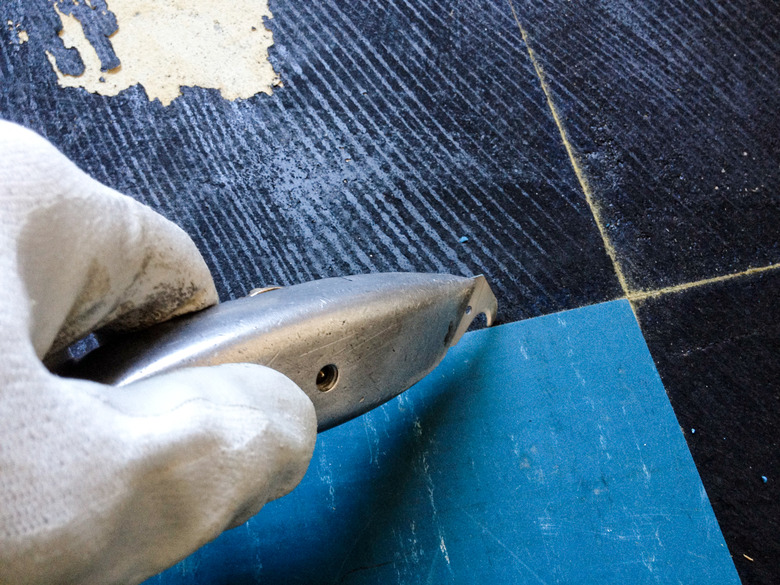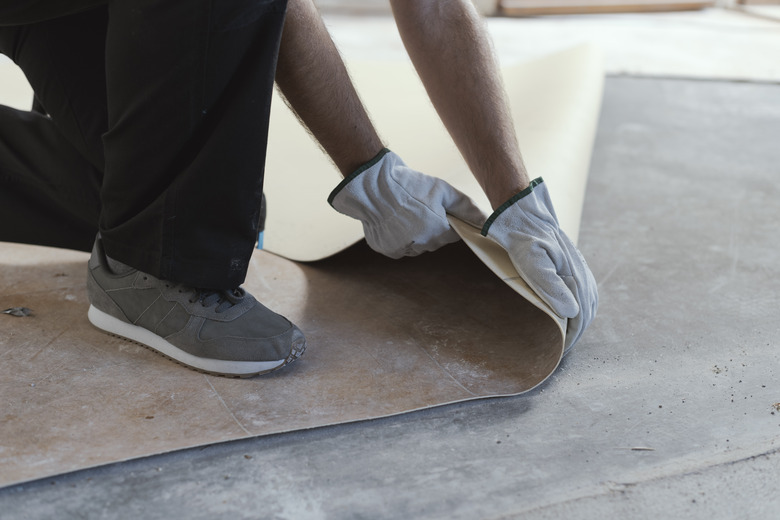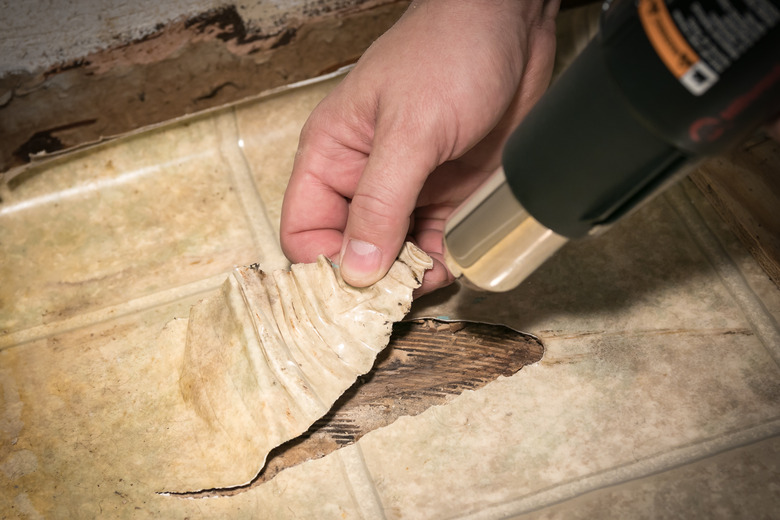How To Remove Linoleum Flooring
The process to remove old linoleum flooring is simple, if not always easy. In most cases, you have to scrape up the old linoleum, which is most likely 12-inch square tiles, then you have to remove the crusty old adhesive underneath. Alternatively, you may have sheet flooring—more likely vinyl than linoleum—that is glued only along the edges, or your linoleum tiles may be bonded to underlayment, which can be removed along with the flooring, saving you the tedious work of scraping up the adhesive.
What's on Your Floor?
What's on Your Floor?
Linoleum flooring is often confused with vinyl flooring. In many ways, they are very similar. Both come in tiles and in sheet form, although sheet linoleum is much less common. Removing linoleum or vinyl flooring can be very easy, or frustratingly difficult. It all depends on how it was installed and to what, if anything, it is bonded. If you have an old sheet vinyl floor that was glued only around the perimeter (a common practice), consider yourself lucky. All you need to do to remove it is to cut it into strips with a utility knife and then roll it up and dispose of it. But if your old flooring is fully glued down, you'll have a bigger battle on your hands.
So the first step in the removal process is to figure out what you have. Start by removing a flooring transition strip, baseboard molding or perhaps an in-floor heat register to get a view of a cross-section of the flooring. If the linoleum has been fully bonded to underlayment (usually 1/4-inch-thick plywood installed on top of the subfloor), the easiest solution is to remove the underlayment and the flooring together. If the flooring has been bonded directly to the subfloor (usually 3/4-inch-thick plywood or lumber boards), to an old flooring material (such as hardwood) or to concrete, then you will need to scrape up the linoleum and remove the adhesive from the subfloor or flooring below.
Tip
Cut sheet vinyl or linoleum into 6- to 12-inch-wide strips with a utility knife to make it easier to remove and dispose of.
Check for Asbestos
Check for Asbestos
If your flooring was installed before 1980, there is a real chance that the adhesive or the backing of the floor covering contains asbestos, a known carcinogen. To be safe, have a sample of the flooring and adhesive tested by a local laboratory (search for "environmental testing lab") or conduct a DIY asbestos test. If the sample tests positive for asbestos, it is recommended that you have a certified asbestos-abatement contractor do the removal. Or, you can simply leave the flooring in place and install new flooring over it. Asbestos is most dangerous when it is scraped up or sanded, making it airborne and therefore easy to inhale.
Floor Scrapers
Floor Scrapers
Floor scrapers come in many forms and sizes, including small handheld tools, long-handled scrapers and power scrapers that you can rent. Generally, choose the largest scraper that is effective and is suitable for your floor. Scrapers designed specifically for removing flooring usually have a sharp, high-carbon steel blade. In some cases, the blades can be removed and sharpened or replaced. Regular putty knives or paint scrapers may be useful for small areas or hard-to-reach spots, but if you are doing a large floor it's worth investing in a quality floor scraper.
Removing Linoleum Bonded to Underlayment
Removing Linoleum Bonded to Underlayment
If you have a linoleum or vinyl floor that has been glued down to an underlayment substrate, grab your circular saw and a pry bar and get rid of both.
- Put on safety goggles, earplugs and a dust mask. Spark and debris will fly when you're cutting the floor.
- Set the cutting depth on your circular saw to no more then 1/8 inch deeper than the combined thickness of the floor covering and the underlayment—usually 3/8 inch or less. You don't want to cut deeply into the subfloor or the floor joists.
- Cut the flooring and underlayment into strips that are 12 to 24 inches wide. You can switch to a reciprocating saw or oscillating multitool to cut close to walls and obstructions, if needed. If you are keeping base cabinetry in place, you can cut around the cabinets with a small tool (available for rent) called a toe-kick saw.
- Separate and remove each strip of underlayment (and linoleum) from the subfloor, using a pry bar or heavy-duty scraper. If the underlayment was attached to the subfloor with screws instead of nails, it will splinter and break as you go, but it should come up with some extra prying. Be careful not to damage the subflooring below. Discard the old flooring and underlayment as you go.
- Remove all nails or screws left in the subfloor.
- Vacuum the subfloor with a shop vac to prepare for new flooring.
Removing Linoleum from Concrete
Removing Linoleum from Concrete
Linoleum (and vinyl) is often installed directly over concrete, usually in basements. The key to removing it from concrete is heat and/or moisture. Hair dryers won't help much. Get a heat gun and warm up the flooring, then scrape off the flooring with a broad putty knife or a floor scraper. Or, you can buy or rent a wallpaper steamer to impart both heat and moisture to the flooring and backing. A third option is to douse the flooring and backing with warm water and let it soak in for 10 minutes, or so, before scraping. Adhesive remover can help soften stubborn adhesive in small or hard-to-reach areas.
Warning
If you are using a heat gun, make sure the room is well-ventilated, wear a respirator, and keep a fire extinguisher handy at all times.
Removing Linoleum From Wood
Removing Linoleum From Wood
The mastic used to adhere linoleum is aggressive and works itself deeply into the pores of wood subfloors or old hardwood flooring. Careful application of heat or steam can help, but be careful not to damage the wood surface below.
- Scrape off the linoleum tiles with a handheld scraping tool or a long-handled floor scraper. Discard all tiles as you remove them.
- Loosen stuck tiles by carefully applying heat to the tile surface with a heat gun or a wallpaper steamer. Scrape up the tile as soon as is it soft enough.
- Remove the adhesive residue by scraping with a handheld scraper. If it's not coming up, apply heat and/or steam with a heat gun or wallpaper steamer, then scrape the loosened adhesive. Use a steamer only as much as needed to soften the adhesive; too much moisture can permanently damage the wood.
- Clean up hard-to-reach areas with a commercial adhesive remover, following the product instructions.
- Scrub the floor thoroughly after all of the residue has been scraped off. Use a heavy-duty detergent, such as trisodium phosphate (TSP) or its less-toxic equivalents. Be sure to follow all manufacturer's safety recommendations. Rinse by sponging with clean water.
- Allow the floor to dry completely before installing new underlayment or flooring.



